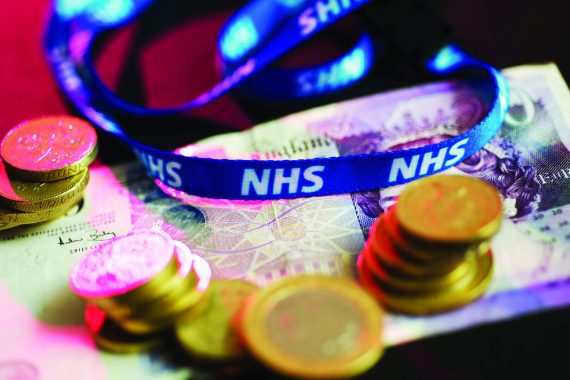How changes to scheme pays may help cut your NHS pension tax bill

In October the NHS Pension Scheme extended the criteria for accepting scheme pays nominations, which means more members can take advantage of the facility when paying tax charges related to exceeding the annual allowance. This will be welcome relief for some but it won’t be the right course of action for everyone impacted.
What is the annual allowance?
The annual allowance is the maximum savings that can be made into your pensions each year (by you and/or your employer), without incurring a tax charge. In the NHS scheme, these savings are based on the increase in your accrued pension benefits over the tax year, as adjusted by inflation. For the 2018/19 tax year the annual allowance is £40,000.
However, since April 2016, the annual allowance has been tapered down (to a minimum of £10,000) for those with an adjusted income of more than £150,000. Adjusted income is your taxable income including the value of any pension contributions, which includes both your NHS pension and any private pension pots you may have.
If you have a gross taxable income of more than £110,000 (called the threshold income), you may have a tapered annual allowance and it’s sensible to check your pension input amount for the tax year to see if you are impacted by the annual allowance.
Details of your NHS pension benefits can be found on your Total Rewards Statement.
How does scheme pays work?
If you’re a member of the NHS pension scheme and you exceed your annual allowance you can choose not to pay your tax charge yourself to HMRC. Instead you can ask the NHS pension scheme to pay your annual allowance tax charge. This is effectively a loan which you pay back, with interest, when you retire or transfer out of the scheme. When you retire, the amount you owe will be debited from your NHS pension benefits.
Mandatory scheme pays can be used to cover annual allowance tax charges in the 1995/2008 or 2015 NHS Pension Scheme if:
- the pension input amount exceeded the standard annual allowance; and
- the annual allowance charge for the tax year in question was more than £2,000 across all pension schemes.
Pension schemes can choose whether to extend the scheme pays facility to their members where the mandatory conditions are not met. This is known as voluntary scheme pays.
Last month, it was announced that for the 2017/2018 tax year, the availability of voluntary scheme pays would be extended to cover more members of the NHS pension scheme impacted by annual allowance charges. It is now available to:
- Members for whom the pension input amount in the 1995/2008 or 2015 schemes is more than their tapered or alternative annual allowance, or
- Members for whom the total pension input in both the 1995/2008 and 2015 schemes is more than the standard, tapered or alternative annual allowance.
NB the alternative annual allowance is the maximum amount of defined benefit pension savings that qualify for tax relief for a member who has triggered the money purchase annual allowance (£36,000 for 2017/18 onwards).
An example of how the new scheme pays works
** This is an example provided by the NHS**
Sarah pays higher rate income tax of 45%. Her pension input amount in 2017/18 is £78,000 and she has a reduced tapered annual allowance of £10,000. She will therefore have to pay an annual allowance charge on £68,000 of her pension input amount.
Her annual allowance charge is £30,600 (£68,000 x 45%). Under the new arrangement Sarah can ask the NHS pension scheme to pay her full annual allowance charge for her.
Prior to April 2016, the scheme would have paid the annual allowance charge on the pension input amount that is more than the standard annual allowance – that is £17,100 (£78,000 – £40,000 = £38,000 x 45%). She would have had to pay an annual allowance charge of £13,500 (£78,000 – £38,000 – £10,000 = £30,000 x 45%) directly to HMRC.
What happens at retirement if you’ve used scheme pays?
Any scheme pays that you use will be recorded as a separate account on your pension record. When your time to retire comes, the total amount owing, including interest, will be permanently deducted from your NHS pension benefits. This could mean a reduction in your retirement benefits.
Should GPs opt for scheme pays?
We have spoken to a number of doctors impacted by the tapered annual allowance who have been finding it difficult to pay their tax charges, especially as a charge can occur year after year. This new stance on scheme pays will bring welcome relief to many.
However, it won’t be the right option for everyone. Scheme pays is effectively a loan and will reduce a member’s final retirement income. Some doctors, and especially those with some time to go until retirement, might be better off paying the annual allowance charges through self-assessment if they can afford it. Otherwise they could find themselves with a reduced income in retirement.
Applying for scheme pays
If you want to use scheme pays you need to apply to the NHS Pension Scheme by completing a scheme pays election notice. The deadline for the NHS Pension Scheme to receive this by is 31 July (following the January in which the charge must be declared on your tax return). If you’re planning to retire or will be 75 by this date, you’ll need to submit an earlier election.
Nigel Pullen and Simon Farthing are financial advisers at Wesleyan
*This article was amended on 15 November to clarify that the annual allowance takes into account pension growth over the tax year.









